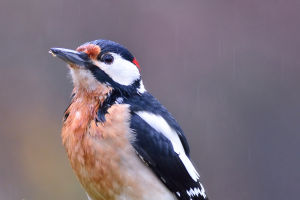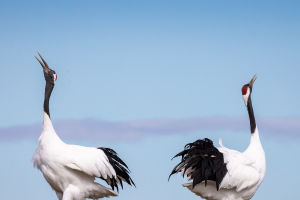The relationship between clownfish and anemones is an excellent example of mutualism, where two species work together to benefit each other. In this relationship, clownfish protect sea anemones, and in turn, anemones provide shelter and food for clownfish.
Let's take a closer look at this fascinating relationship.
Sea anemones are invertebrate coelenterates that inhabit shallow seas and coral reefs. They are mostly flesh red, purple, or light brown and have tentacles containing toxic stinging cells that make it difficult for other marine animals to approach them. However, their slow movement and difficulty in obtaining food make anemones vulnerable to starvation.
Clownfish, on the other hand, are brightly colored fish that often attract the attention of predators. They have adapted to living close to anemones and have developed a mutualistic relationship with them. When predators threaten clownfish, they seek refuge in the tentacles of anemones, which can secrete venom to protect themselves. The clownfish also secrete mucus on their bodies that protect them from the stinging cells of the anemone.
Clownfish reside between the tentacles of the anemone, which protects the anemone from being eaten by other fish, and the tentacles of the anemone, which have stinging cells that save the clownfish from predation. The clownfish also help to remove debris, such as necrotic tissue, parasites, and mud, from the anemone, which helps to keep it healthy.
The relationship between clownfish and anemones also has an important ecological role. Symbiotic relationships like this one are estimated to fix about 40% of the biological nitrogen in the ecosystem. Woody species with tubers capable of fixing nitrogen are usually the first to occupy poor soils. For example, alder can quickly occupy entire moraine soils in Alaska due to the presence of symbiotic nitrogen-fixing bacteria in the tubers.
In addition to providing protection and cleaning services, clownfish also have a strong sense of domain. They usually occupy an anemone as a pair of male and female, and they do not allow other clownfish to enter. If the anemone is large enough, they may allow some juveniles to enter, but the strongest female and her mate will always dominate and suppress other clownfish to defend their territory.
Clownfish colonies also have an interesting feature where a dominant female controls the family. If this female dies or disappears, her mate, the male, undergoes hormonal changes and transforms into a female within a few weeks. This new female then takes over the dominant role in the colony.
One interesting fact about the clownfish and anemone relationship is that the clownfish doesn't just benefit from living among the tentacles of the anemone, it also helps to protect the anemone from predators. By chasing away butterflyfish and other creatures that feed on anemones, the clownfish ensures that its home remains intact and available for its use.
Additionally, the clownfish's waste provides nutrients for the anemone, which can help it to grow and thrive. This relationship is an example of how different species can work together to survive and benefit each other in the complex ecosystem of the ocean.
In conclusion, the relationship between clownfish and anemones is an excellent example of mutualism in nature. Both species benefit from their close association, with clownfish providing protection and cleaning services to anemones, while anemones provide shelter and food for clownfish. This unique relationship has an important ecological role and is essential for the health and survival of both species.


